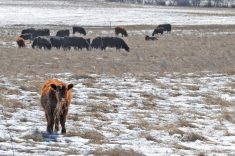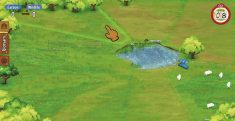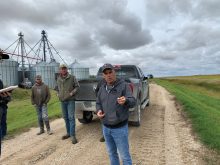Researchers in Manitoba are exploring the prospects of a forage grass from Africa called teff.
Teff (Eragrostis tef) is a warm-season annual grass that originates in northeast Africa, where it is grown for grain and forage production. As a forage, the crop is notable for its high protein content and palatability, as well as its potential for high yields.
One of the motivations for testing the grass in Manitoba was its susceptibility to frost.
Read Also

Journal pulls long-cited glyphosate study for ethics violations
The journal Regulatory Toxicology and Pharmacology has retracted a 2000 Monsanto-linked glyphosate review, drawing new scrutiny as Bayer faces mounting legal pressure.
“It is so frost sensitive that we have never seen any kind of volunteer in years afterward, so that was attractive as a starting point,” says James Frey, applied research specialist with Manitoba Agriculture, who works out of the Parkland Crop Diversification Foundation (PCDF) office in Roblin.
Frey spoke at a grazing workshop hosted at the Manitoba Beef and Forage Initiative (MBFI) farm in Brookfield, Man.
The foundation began its teff research in 2020, but the first year didn’t work out.
“I think we seeded it around May 15, but we had a frost after that and it must have been just after it germinated,” Frey says. “That ended up wiping out all but the hardiest of the plants.”
All that survived grew, and that was encouraging. And despite the drought in 2021, the plants did well.
“I want to say at the outset that when you do small plot research, your yields and your numbers tend to be higher than you would see in a real-life environment where all of the dips and furrows knock a bit out of your production,” says Frey.
But even with that in mind, the 2021 trials exceeded expectations.
“If you remember back, we did have quite a number of days in the 30s early on in the season,” he says. “I think that’s what caused that growth because it is a warmer season plant.”

The team at PCDF harvested in the last week of July and then harvested the regrowth in late September. Total yield came in at roughly 10,000 pounds per acre. Approximately 20 per cent of the total yield was from the first cut and the rest from the second. For comparison, they also grew barley green feed that yielded about 6,000 lb. per acre.
Perhaps even more remarkable than the yield difference was the protein content. The first cut saw protein levels of about 21 per cent and the second cut had 11 per cent. That compares favourably to barley, which saw an average (over five years) of 10.5 per cent protein.
The research is now into its third year. Trials have been running in parallel at the other crop diversification centres in the province. However, this year researchers asked MBFI to see how teff performed in a larger, eight-acre field that is closer to a real-world environment.
“One transition problem going from the small plot to eight acres was how to seed it,” says MBFI General Manager Mary-Jane Orr. “We ended up finding play sand from Canadian Tire that had to be spread out on tarps to get dry enough to blend.” The seeds are tiny. There are 1.2 to 1.5 million per pound.
In addition to that complication, late establishment as a result of the wet spring meant generated problems with broadleaf weeds, which they got under control with 2,4-D.
“We were really optimistic that we were going to be able to take a crop off and silage and then have the grazing potential,” says Orr. However, the late establishment dashed those plans. Now they plan to graze it in October.
Overall, Frey says he’s happy with what he’s seeing at the MBFI trial.
“For the field scale, it was a very good catch and the weeds were well controlled. For reference sake, we seeded at roughly the same time in Roblin and we don’t have this amount of growth.”
Frey cautions that it’s too soon to draw conclusions about the data available so far. There is only one full year in the books.
“You need to have as many years of data as possible to start to make reasonable forecasts about things.”
















